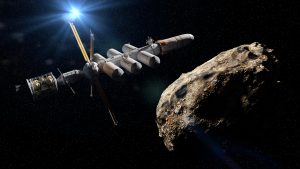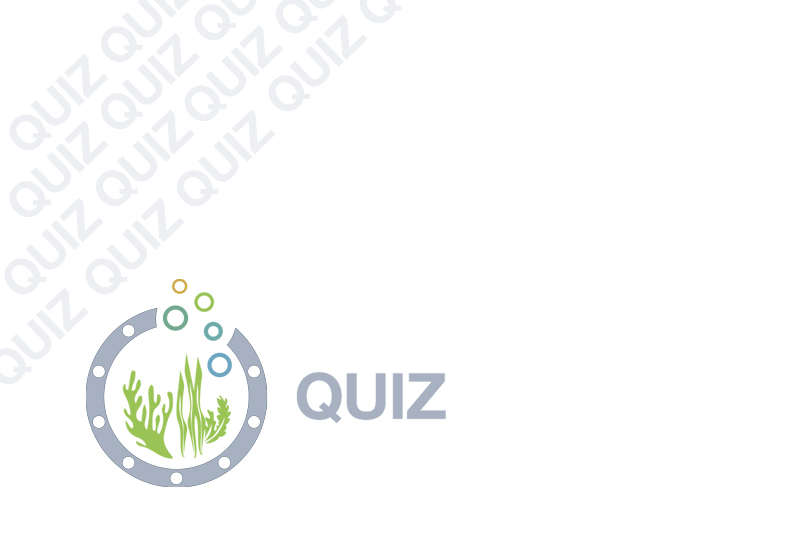
SUB.D | The Asteroid Belt
Rocketing past Mars, we head toward … the Asteroid Belt….
DUNN DUNN DUNNNNNNN……
Which is not nearly as scary as film and television would make you think. In fact, you’d hardly know that you entered it, since the actual distance between objects in the asteroid belt are roughly two and half times the distance from the Earth to our moon. That makes them nearly a million kilometres away from each other, so it’s not nearly so crowded as in video games.
 The first asteroid was discovered in 1801 by Giuseppe Piazzi, who thought he’d found a new planet, which he named Ceres, after the Roman goddess of agriculture. But then other astronomers started finding more of these “planets,” and they realized these new objects were something a bit different. They came up with the new classification of ‘asteroid’, which means “star-like” in Greek.
The first asteroid was discovered in 1801 by Giuseppe Piazzi, who thought he’d found a new planet, which he named Ceres, after the Roman goddess of agriculture. But then other astronomers started finding more of these “planets,” and they realized these new objects were something a bit different. They came up with the new classification of ‘asteroid’, which means “star-like” in Greek.
Ceres is located in the asteroid belt, but at 950 km (590 mi) in diameter, it’s the smallest of the dwarf planets, as well as the one closest to the sun. Named for the Roman goddess of agriculture. Ceres alone accounts for approximately one third of the mass of the entire asteroid belt. Ceres was originally called a planet, but as more asteroid belt members were discovered, it was demoted to asteroid. Its status changed again, this time to dwarf planet, in 2006.
Vesta (in Roman myth, she was the keeper of the sacred fire on Mt. Olympus) is the second largest body in the asteroid belt at 530 kilometres or 329 miles, and the brightest asteroid in the sky. It’s the first asteroid visited by a spacecraft: the Dawn mission orbited Vesta in 2011,
Vesta (in Roman myth, she was the keeper of the sacred fire on Mt. Olympus) is the second largest body in the asteroid belt at 329 miles, and the brightest asteroid in the sky. It’s the first asteroid visited by a spacecraft: NASA’s Dawn mission orbited Vesta in 2011, and has been orbiting Ceres since 2015.
Scientists have already discovered close to a million asteroids, and potentially over 150 million more may still be waiting for their moment in the telescope. Though every asteroid is unique, they are generally divided into three types:
- C-type (chondrite) are probably made of clay and silicate rocks. Dark in appearance, they are the most common type of asteroid.
- The S-types (“stony”) are made up of silicate materials and nickel-iron.
- The M-types (” metallic”) are often made of nickel-iron.
Most asteroids are small — the size of a pebble or even dust, but there are about 200 asteroids that we know of which are larger than 60 miles in diameter, and there are possibly as many as 1.5 million asteroids with a diameter of half a mile or more. More than 150 asteroids have their own moons, and some even have two!.
Why do we care about asteroids? Depending on their type, asteroids can contain everything from water (useful for long-term space exploration missions) to nickel and cobalt or even valuable metals like gold or platinum. These are often in much higher concentrations than we would find on Earth. Around 9,000 known asteroids are currently traveling in orbit close to the Earth, and some 1,000 new ones are discovered each year. According to estimates, a one-kilometer diameter asteroid may contain up to 7,500 tons of platinum, with a value of upwards of $150 billion. Several companies are planning for missions to mine asteroids.
In 2016, NASA called for space aficionados to send their art on a journey aboard NASA’s Origins, Spectral Interpretation, Resource Identification, Security-Regolith Explorer (OSIRIS-REx) spacecraft. OSIRIS-REx arrived at the asteroid Bennu in late 2018 and will collect a variety of scientific data, as well as 60 grams of the asteroid itself, to eventually be studied back here on Earth. But what about the art submissions? The #WeTheExplorers campaign invited the public to take part in this mission by expressing, through art, how the mission’s spirit of exploration was reflected in their own lives. Submitted works of art were saved on a chip on the spacecraft.
We’ll dive a lot deeper into the asteroid belt later on, when we explore some of the tech being developed to explore, mine, process and use the resources we find there.
Once we’ve safely past through the asteroid belt with little to no excitement whatsoever – sorry, science fiction fans – you’d better grab a good book, some good listening, and a few of your favourite DVDs, because the next leg of the journey is a long one.
Curriculum Reference Links
- Earth and Space / Building Blocks/ 1: Students should be able to describe the relationships between various celestial objects including moons, asteroids, comets, planets, stars, solar systems, galaxies and space.
- Earth and Space / Building Blocks/ 3: Students should be able to interpret data to compare the Earth with other planets and moons in the solar system, with respect to properties including mass, gravity, size, and composition.




